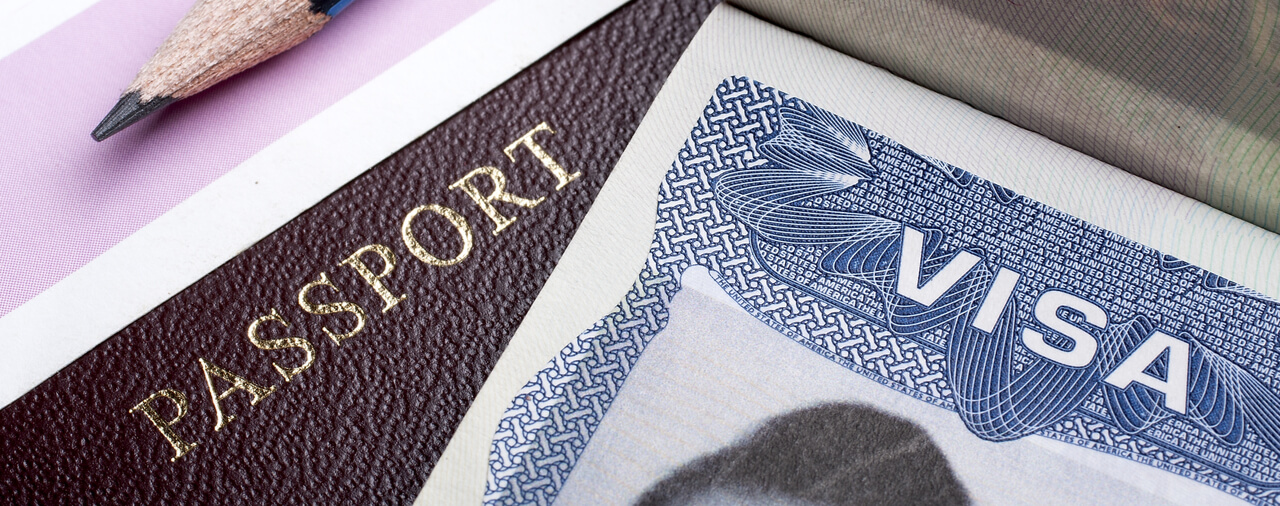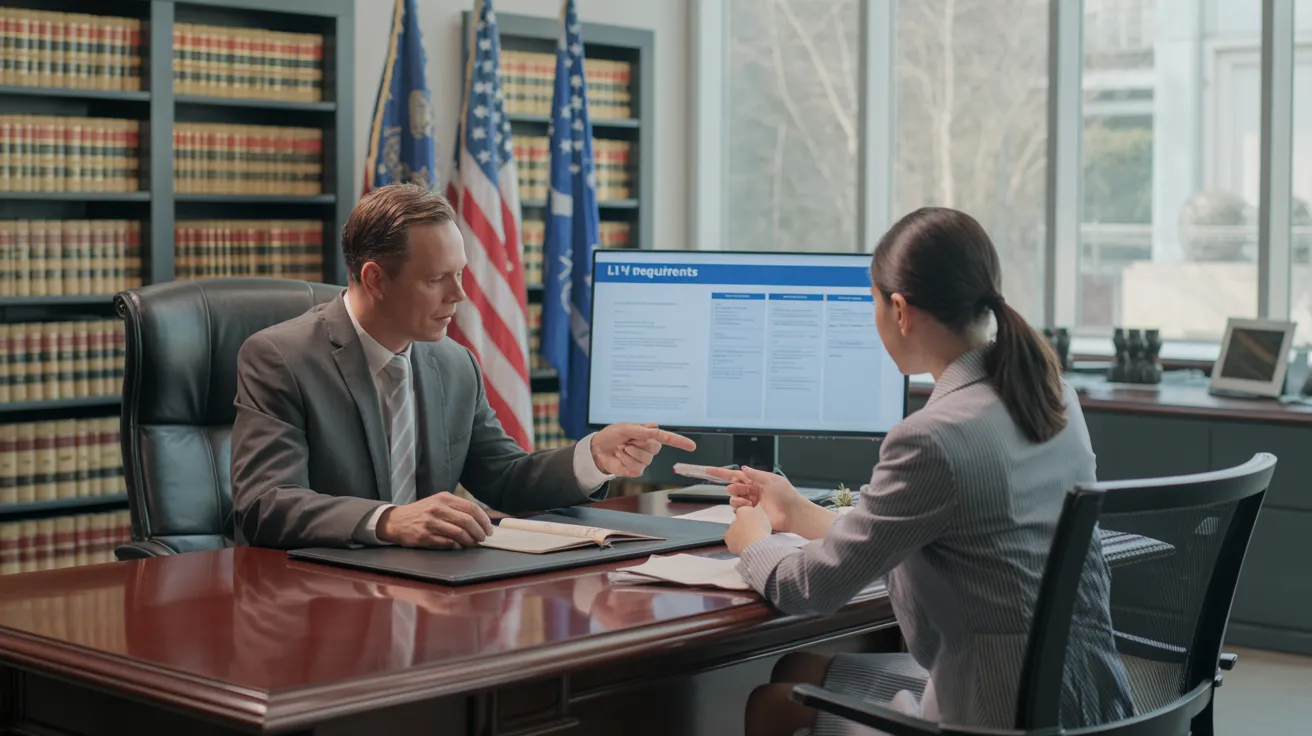L1 Visa Explained
Every little thing You Need to Understand About the L1 Visa: Advantages, Needs, and A lot more
The L1 Visa functions as a critical tool for international business looking for to move staff members to the USA, helping with both operational performance and the transfer of specialized expertise. With unique categories for executives and specialized experts, this visa provides countless advantages, consisting of prospective pathways to permanent residency. Recognizing the eligibility demands and application procedure is vital for an effective shift. As we check out the intricacies of the L1 Visa, it becomes clear that maneuvering its complexities is vital for companies intending to leverage international skill properly. What obstacles might you run into along the road?
Overview of the L1 Visa

Sorts Of L1 Visas

Numerous types of L1 visas satisfy the diverse needs of international business looking to move staff members to the USA. The 2 key groups of L1 visas are L1A and L1B, each designed for particular functions and duties within an organization. L1 Visa.The L1A visa is meant for supervisors and execs. This classification enables companies to move people who hold managerial or executive settings, allowing them to supervise procedures in the U.S. This visa stands for a preliminary duration of up to three years, with the possibility of expansions for a total amount of up to 7 years. The L1A visa is specifically beneficial for business seeking to develop a strong leadership presence in the U.S. market.On the various other hand, the L1B visa is assigned for employees with specialized expertise. This includes individuals that possess advanced experience in specific areas, such as exclusive modern technologies or distinct processes within the business. The L1B visa is also legitimate for a first three-year duration, with extensions readily available for up to five years. This visa classification is excellent for firms that require workers with specialized skills to improve their procedures and preserve a competitive side in the U.S.Both L1A and L1B visas permit dual intent, suggesting that visa holders can get permanent residency while on the visa. Understanding the differences in between these two categories is essential for services intending to navigate the intricacies of employee transfers to the United States properly
Qualification Requirements
To get an L1 visa, both the company and the worker have to satisfy details eligibility standards set by U.S. migration authorities. The L1 visa is designed for intra-company transferees, enabling international companies to transfer employees to their U.S. offices.First, the employer must be a qualifying company, which means it needs to have a parent business, branch, subsidiary, or associate that is working both in the U.S. and in the international country. This partnership is important for demonstrating that the worker is being moved within the same business framework. The employer must additionally have actually been doing service for at the very least one year in both locations.Second, the employee needs to have been employed by the foreign firm for at least one continual year within the 3 years preceding the application. This employment needs to remain in a supervisory, exec, or specialized knowledge capacity. For L1A visas, which accommodate managers and executives, the worker must demonstrate that they will certainly remain to operate in a comparable capacity in the U.S. For L1B visas, intended for employees with specialized knowledge, the private need to possess unique know-how that adds significantly to the firm's procedures.
Application Process
Maneuvering the application procedure for an L1 visa includes a number of crucial steps that have to be finished accurately to guarantee an effective outcome. The initial step is to determine the suitable classification of the L1 visa: L1A for managers and executives, or L1B for employees with specialized knowledge. This distinction is considerable, as it affects the documents required.Once the category is identified, the U.S. company need to submit Kind I-129, Application for a Nonimmigrant Employee. This form should consist of detailed info concerning the firm, the employee's role, and the nature of the work to be executed in the U.S. Accompanying documentation typically consists of evidence of the partnership in between the united state and foreign entities, evidence of the worker's qualifications, and information regarding the work offer.After entry, the united state Citizenship and Migration Services (USCIS) will certainly review the request. If accepted, the worker will be informed, and they can after that look for the visa at an U.S. consular office or consular office in their home country. This includes completing Kind DS-160, the Online Nonimmigrant copyright, and arranging an interview.During the meeting, the applicant should provide different documents, consisting of the accepted Form I-129, evidence of employment, and any type of added supporting proof. Following the meeting, if the visa is approved, the worker will receive a visa stamp in their copyright, permitting them to go into the united state to work for the sponsoring company. Proper preparation and detailed paperwork are vital to steering this procedure effectively.
Advantages of the L1 Visa
One of the significant benefits of the L1 visa is its ability to facilitate the transfer of vital personnel from international offices to the United States. This visa is specifically useful for international firms seeking to maintain consistency in operations and management across boundaries. By permitting executives, managers, and specialized employees to work in the U.S., organizations can guarantee that their most necessary ability is available to drive organization imp source objectives.Another considerable advantage of the L1 visa is its relatively uncomplicated application procedure contrasted to various other work visas. Organizations can request for the L1 visa without the demand for a labor certification, which improves the employment of foreign staff members. The visa can be granted for a preliminary duration of up to three years, with the possibility of extensions, helping with lasting assignments.The L1 visa also offers a course to permanent residency. Staff members on L1A visas (for managers and executives) can make an application for an Eco-friendly Card after one year, quickening their adjustment to permanent standing. This attribute is an eye-catching motivation for gifted individuals trying to find stability in the united state workforce.Additionally, L1 visa owners can bring their prompt relative to the U.S. under L2 status, enabling partners and kids to live and examine in the country, boosting the total allure of this visa classification. In general, the L1 visa works as an essential device for worldwide services, cultivating cross-border cooperation and skill movement.
Typical Challenges
While the L1 visa provides various benefits for international firms and their staff members, it is not without its obstacles. One remarkable difficulty is the rigid paperwork and qualification needs enforced by the united state Citizenship and Immigration Solutions (USCIS) Companies need to supply comprehensive evidence of the international staff member's credentials, the nature of business, and the qualifying relationship between the united state and international entities. This procedure can be time-consuming and might call for lawful expertise to navigate successfully.Another obstacle is the capacity for scrutiny throughout the request process. USCIS policemans may examine the legitimacy of business procedures or the employee's duty within the organization. This examination can result in delays and even rejections of the copyright, which can significantly influence the business's functional strategies and the worker's profession trajectory.Furthermore, the L1 visa is connected to the sponsoring company, which indicates that job adjustments can make complex the visa status. If an L1 visa holder wishes to change companies, they need to usually seek a various visa classification, which can add intricacy to their immigration journey.Lastly, keeping compliance with L1 visa regulations is essential. Companies must guarantee that their worker's role aligns with the initial petition which the organization proceeds to satisfy the qualification demands. Failing to do so can result in retraction of the visa, impacting both the worker and the organization. These challenges necessitate extensive preparation and recurring administration to assure an effective L1 visa experience.
Tips for Success
To efficiently navigate the L1 visa procedure, careful preparation is vital. Begin by completely comprehending the specific requirements for the L1 visa classification you are making an application for, whether L1A for supervisors and execs or L1B for workers with specialized expertise. Gather all required documentation early at the same time, including evidence of your work background, business framework, and the nature of the company operations.Engage lawful guidance experienced in immigration legislation to guide you through the intricacies of the application. A lawyer can assist guarantee that your application is complete, accurate, and compelling. They can additionally aid in preparing for possible ask for proof (RFEs) by proactively addressing areas that might increase questions.Additionally, keep clear communication with your employer, that must give crucial assistance for your application. L1 Visa. Confirm that they comprehend their responsibilities, including filing the needed applications and providing documentation that substantiates your function in the organization.Prepare for the visa meeting by practicing response to usual inquiries regarding your specialist background and the nature of your work. Showing self-confidence and clearness can greatly influence the outcome of your application
Frequently Asked Concerns
Can Household Members Accompany L1 Visa Owners?
Yes, member of the family can come with L1 visa owners. Spouses and single kids under 21 years old are eligible for L2 visas, which enable them to live and examine in the USA throughout the L1 owner's keep.
The Length Of Time Can L1 Visa Holders Stay in the U.S.?
L1 visa owners can originally remain in the U.S. for up to 3 years (L1 Visa). This period may be prolonged, enabling a maximum remain of 7 years for L1A visa holders and 5 years for L1B visa holders
Is the L1 Visa a Twin Intent Visa?

Can L1 Visa Holders Look For a Permit?
Yes, L1 visa holders can look for a permit - L1 Visa. The L1 visa sustains double intent, permitting holders to seek irreversible residency while preserving their non-immigrant status, helping with a smoother changeover to a copyright
What Occurs if an L1 copyright Is Denied?
If an L1 copyright is rejected, the applicant might obtain a notification laying out the reasons for rejection. L1 Visa. They can appeal the decision, reapply, or check out alternate visa choices relying on their circumstances and credentials
Conclusion
In summary, the L1 Visa works as a crucial tool for multinational firms seeking to move employees to the United States. Understanding the differences in between L1A and L1B classifications, in addition to the qualification needs and application processes, is important for successful navigation of this non-immigrant classification. The advantages provided, consisting of streamlined applications and paths to permanent residency, even more enhance its appeal. Attending to common challenges effectively can lead to a more favorable outcome in the copyright process.